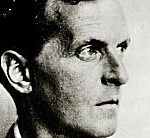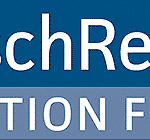
Solution Focus
Solution focused work has been co-developed in the 80s by Insoo Kim Berg and Steve de Shazer in Milwaukee, USA, through observation and learning from therapy sessions and therapy successes. Observing the therapist-client interaction was the main focus. Theoretical models were of no importance at this early stage. Solution Focus was developed free of theories.

LATER THEORETICAL BASIS
Only during the later and further development of their methodology Steve de Shazer and Insoo Kim Berg identified relationships and some rationales of their framework in the philosophy of Ludwig Wittgenstein.
„The meaning of a word is its use in language.“
Ludwig Wittgenstein
According to Ludwig Wittgenstein (picture) a “belief in causal relation is superstition.” A theoretical baseline for essential principles such as focussing on interaction instead of inner constructs can be found in social constructivism as well.
Social constructivism (K.J.Gergen) is defined as putting knowledge and experience to the centre of interest and by doing this it is a contradiction towards the understanding of radical constructivism (Watzlawiket al.).
Reality is considered as a social construct and the centre is communication not thinking. This antagonism between radical constructivism and social constructivism is expressed, e.g., by matching “I think, therefore I am” and “I am communicating, thus I am thinking”.
The finite end of a causal assumption between a problem and a solution is also supported by findings from complexity theory. Complexity theory is stating that especially in complex contexts many phenomenons cannot be explained by linear cause-effect-chains.

THE SEARCH FOR CAUSES
Searching for causes is well known from many approaches, such as the therapeutic or the medical model.
Let us take a look at the medical model. How is the approach towards a solution accomplished in this environment?
First, the problem will be analysed in its deep structure. A diagnosis or a classification is sought in order to be able to solve the problem in the medical model. Often, a lot of time is invested in describing the problem. By doing this it is neglected however, that diagnoses are constructs.
If we anticipate that our world is continuously changing the idea of a causal attribution or a diagnosis becomes – based on this idea – a construct that cannot be stable or valid for a longer time.
What we also tend to forget: the more you talk about a problem the worse it seems to be.
In contrary the solution focused model is directing the process of thinking towards desired changes not towards problems and their root causes.
Interestingly, the mere processes of generating solutions are very similar even if the problems at hand are very different. Knowing this, solution focused consultancy treats various topics with similar tools and principles, with the same approach.

BASIC PRINCIPLES OF SOLUTION FOCUS
Explore solutions. Explore what is better or what you would like to see better and don't try to “understand” a complex problem.
- The solution is not necessarily linked to the problem.
- The language of building a solution is different from the language of describing the problem.
- Small steps can evoke large changes.
- No problem is happening all the time – there are always exceptions that can be utilized.
People become people by their own experiences, interactions and communication with other people. Desired changes can be obtained easier, if their description is concrete and in terms of everyday interactions. Statements about values, beliefs or emotions are elaborated by questions about observable actions.
Every case is different. Every person, every case is heard and approached in its unique way, instead of being judged by a theory.
Theories and models are used only upon special request of a customer by no means they are used generally. Understanding solutions as precise, realizable steps the language in use is simple but exact and hence goal oriented instead of flooded with abstract terms.
